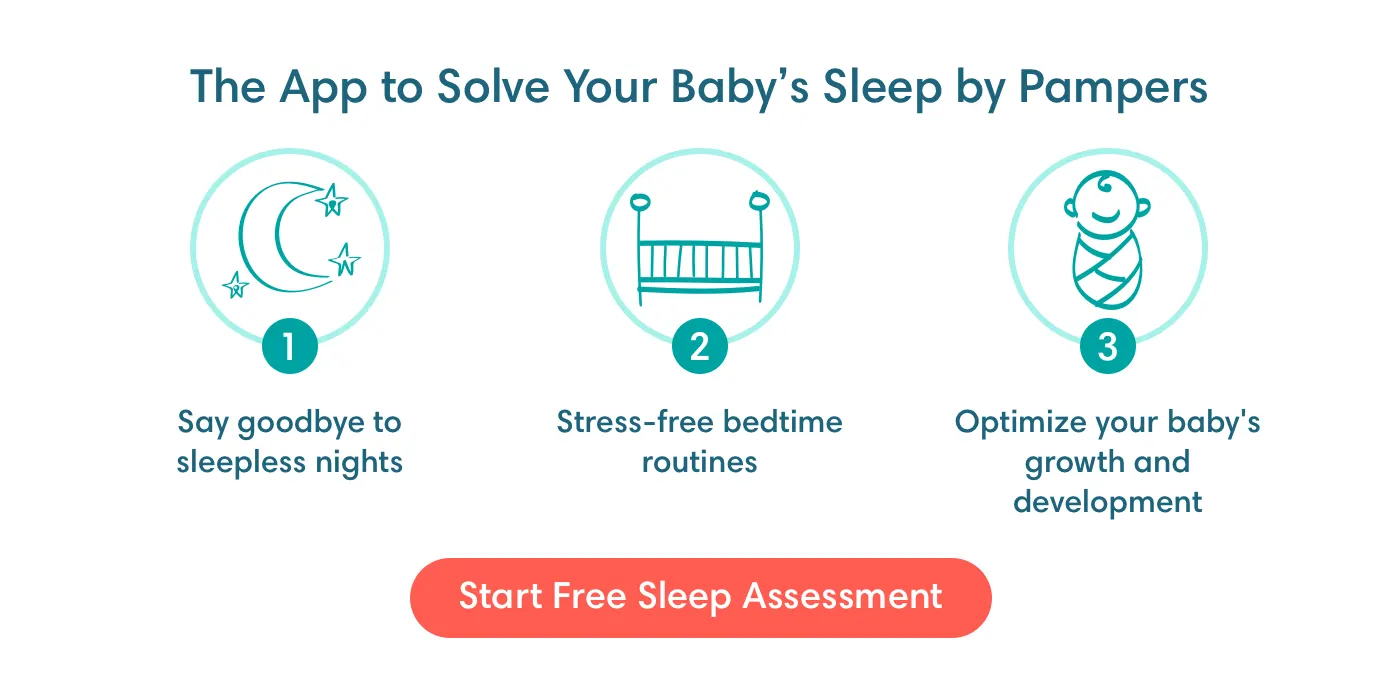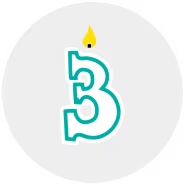2-Month-Old Baby: Happiness and Comfort in Familiar Faces
Have you noticed that your tiny newborn isn't so tiny anymore? There are many exciting growth and developmental milestones to look forward to once your baby turns 2 months old, and we’re providing a preview of some of the ones you’ll definitely want to watch for. We also cover how to deal with common health concerns like diaper rash and coughs. If you’re returning to work soon, we also have a section on things to keep in mind so that this transition goes smoothly for both you and your baby.

Baby Development Milestones
This month will be full of discovery for your baby, as he becomes more and more aware of the world around him. Here are some of the baby development milestones your 2-month-old baby may be approaching.
Growth and Physical Development: The Mani-Pedi Routine
During these early months, babies tend to grow about 1 to 1 ½ inches in length and gain about 1 ½ to 2 pounds in weight each month. Your healthcare provider will monitor your baby's growth rate at each checkup, noting your 2-month-old baby's weight, length, and head circumference to make sure he's on track and doing well. Read more about how baby growth charts are used in your baby's first 24 months.
Speaking of growth, you may have noticed that your baby's nails seem to grow at the speed of light. You'll likely have to clip or file your baby's fingernails about once a week, and his toenails about twice a month. You may not have to worry about reminding yourself — you'll know it's time when you or your baby get scratched! Here are some tips on how to care for your baby's nails:
Use baby nail scissors or clippers, or a soft nail file.
Clip your baby's nails while he's asleep or after a relaxing bath, as his hands will be less of a moving target.
Push down on the skin of the fingertip so you can safely clip just the nail, not the skin.
File any rough edges after clipping the nails.
If you're still unsure about how to safely cut your baby's nails, ask the healthcare provider to show you how.
For even more “growing news,” the soft spots on your baby's head, called the fontanelles, will begin to harden as the bones of your baby's head fuse together.
Senses: Seeing the World in Color
Your baby will start to recognize objects and will love to look at familiar human faces best of all, especially mom's and dad's. In earlier weeks, your baby may have been drawn to simple patterns with straight lines, but soon he'll start to notice circular shapes and patterns such as bull's-eyes and spirals. Your little one is starting to see colors better, too.
As you take your baby out for walks he'll enjoy looking out from the stroller or the baby carrier. Help him learn by saying the names of different objects aloud, in particular naming anything that catches his eye.
Movement: Baby Squats
Although many of your baby's movements are still reflexive, he'll gradually learn to control more of what he does. For a while he may seem less active as some of his early reflexes fade, but new movements will start appearing that are more purposeful. The kicks he may have started practicing last month will start to gather force, as you might well learn from experience if he accidentally kicks you. In the coming weeks, he'll start controlling bending and straightening his knees. If you hold him upright with his feet on the ground, he might crouch down and then “stand” — and he'll soon realize he can bounce.
Your baby's hand and finger skills are also developing. He may be spending more and more time with his hand unclenched, and he'll likely be fascinated by his hands as they pass by in front of him. He'll slowly develop the ability to bring his hand to his mouth — initially it might happen by accident, but eventually he will place his hands in his mouth on purpose as sucking his knuckles will be soothing. If you put a rattle in his hand he might hold onto it and even shake it, but — watch out! — he'll drop it when he gets bored.
All that tummy time he's been putting in (with you closely supervising) will slowly start to pay off. Around this month or next, your baby will be able to push up off his arms, and briefly hold his chest and head up. This is big news because it's a step toward greater independence for your little one. Gaining this skill will mean being able to look around at whatever interests him, even when he's lying on his tummy.
Personality: Muh-muh-muh-muh
Your baby's personality will reveal itself more and more each day. It will start to show in the way he communicates using facial expressions, vocalizations, and even gestures. For example, if you smile at him and he feels happy he might smile right back at you. Around this time, he might start to happily amuse himself by making all kinds of strange new sounds. You might hear muh-muh and bah-bah, and aahs and oohs. Have conversations with him repeating these sounds back to him. “Baby talk” is important at this stage, but add in real words, too. All along, he will be learning that conversation is a two-way street where each person takes turns, and each contribution is important. As the weeks progress, your baby will be more alert to your tone of voice and will be able to get an idea of your mood by how you talk to him. Your voice also helps signal what's to come, so tell him what you're doing when you're changing his diaper, taking him out for a walk, or bathing him.
Soon your baby won't just be smiling: he'll be squealing or laughing in delight. But don't be surprised if your baby isn't as responsive to strangers. Mom and Dad are his favorites, as are his siblings, and probably other regular visitors. Just like adults, your little one has his preferences, too!

How to Support Your Baby’s Development
Playing and interacting with you both have a huge role in your baby's brain development and early learning. Here are some activities you could do together:
Read to your baby. Even if he doesn't fully understand all the words, your baby is listening to the sounds you're making, and he's learning about tone and pacing, for example. Don't hesitate to read the same book over and over — babies love repetition. For more tips on reading to your baby, watch this short video on language development through “baby talk”.
Have a “chat.” Respond to your baby's coos and aahs, and initiate conversation by telling him what you're up to. When he “talks,” try not to interrupt or look away. Your attention tells him that his voice is important too and helps build trust.
Tummy time. Continue to give your baby short periods of tummy time each day to help strengthen his neck, arm, and shoulder muscles. Tummy time involves laying your baby on his tummy on a firm surface like the floor — just make sure you're watching.
Introduce a variety of sounds. Play your baby music or give him toys that make different sounds when touched. Let him listen to the sounds of everyday life, too. For example, have him safely nearby as you do household chores — the sound of you tidying will probably fascinate him.

Feeding Your 2-Month-Old Baby
Feed your baby whenever he’s hungry — which will be often, as 2-month-old babies usually eat about six to eight times a day. He’ll show you he's ready to eat by making sucking motions, moving his hand to his mouth, whimpering, or flexing his arms and hands. Avoid overfeeding your baby by keeping an eye out for the signs he’s had enough, such as slowing down or stopping sucking or turning away. You can probably tell your baby is generally eating well if he dozes off after a feed but seems alert, content, and active between feeds. At this stage, you might be able to leave out one middle-of-the-night feed; as your baby’s stomach capacity grows he may not be hungry again until early morning.
Tracking wet and dirty diapers: The number of diapers you change gives you clues about whether your baby is healthy and is getting enough to eat. Keep in mind, each baby is unique and may pee anywhere from once every couple of hours to only once every four to six hours. Fewer than six wet diapers may be a sign of mild dehydration. Pay attention to how many diapers your baby typically goes through. If there is a significant drop in the number of wet diapers or your baby’s mouth seems dry, he may be dehydrated. If you’re in any doubt, consult your baby’s healthcare provider. There is no “right” number when it comes to poopy diapers either. Two-month-old babies can poop anywhere from several times a day to only once a week. If your baby is pooping less than normal but the stools are soft and your baby is otherwise well, there may not be cause for concern. Still, if you’re worried, your baby’s healthcare provider will be able to check whether everything is OK.
As you’ve no doubt realized, your baby’s getting through plenty of diapers. If you haven’t already, don’t forget to download the Pampers Rewards app so you can get great rewards for all those diapers you’re buying.

How Much Sleep Does a 2-Month-Old Baby Need?
At 2 months old, your baby may be getting about 14 to 17 hours of sleep over a 24-hour period. She may spend more time alert and awake during the day, and although she may want fewer naps they might be a little longer in duration. At this stage, some (but not all) babies even manage to sleep through the night, meaning about six to eight hours in one stretch.
Good sleep routines — regular bedtimes and naptimes, and restful sleeping periods — give your little one a great start in life, contributing to her general health and wellbeing. Although it can take a while for evening routines to become established, you can help your baby head in the right direction by making nighttime feeds as quiet as possible. For example, keep the lighting low, don’t speak much or loudly, and after the feeding and a quick diaper change put her right back to sleep on her back. For more on this, watch these great tips for a good night’s sleep.

Your Baby’s Health: Dealing With Diaper Rash
Skin conditions:
• Diaper rash. A wet or soiled diaper that touches baby skin for too long can cause a red rash on the diaper area. To combat diaper rash, change wet or poopy diapers as soon as possible, clean the area with wipes at each change, and expose your baby’s bottom to air whenever possible. These steps will help the rash clear up and help prevent it from reoccurring. Watch our short video on diaper rash treatment and prevention for even more tips.
• Heat rash. These tiny, red bumps typically occur in hot and humid weather, usually on the neck, arms, legs, or diaper area. Don’t apply skin ointments; instead, cool the area with water, then completely dry the skin, dress your baby in cool, dry clothing, and try to keep her out of the heat. With this kind of care, heat rash typically goes away after a few days.
• Eczema. If your baby has red, itchy, scaly patches of skin in the crooks of her elbows and knees, it could be eczema. Your baby’s healthcare provider can make a diagnosis and will recommend treatment options. It may help to use mild, unscented baby soaps on your baby and her clothes and sheets, to dress her in soft clothes that don’t prickle, and to bathe her three times a week at the most.
• Coughing. If you notice your 2-month-old baby coughing, it’s a sign that her airways are irritated. Coughs can be triggered by many kinds of respiratory illnesses, from the common cold to pneumonia. It’s a good idea to reach out to your baby’s healthcare provider if your little one is coughing; but if coughing is accompanied by fever or a difficulty in breathing take your baby to the doctor right away for treatment or advice.
• Allergies. Potential signs of a food allergy or sensitivity include if your baby seems fussy or cries excessively, vomits up most of her food, has very watery or bloody poops, or develops a rash. Your baby’s healthcare provider will need to explore potential causes and make a diagnosis.

FAQS AT A GLANCE
Two-month-old babies can typically see at least 12 inches away, maybe even up to 2 feet or more. You'll know she can see further when you catch your baby smiling when you walk in the other side of the room, or when you see her studying one of her toys on the floor. In the next few months, you might notice that her distance vision has improved if you see her staring out the window, for example.

Your Life as a Parent: Returning to Work
Depending on your situation, different factors may come into play as you decide if and when to go back to work, including your finances, maternity leave options, and general family considerations. If you can, allow yourself some flexibility as you may change your mind about your return to work when the time comes. Whenever you do return to work, it’s natural to feel sad, anxious, or concerned about how your baby will adjust. If your partner is not staying home with your baby, the key is to find child care that you feel comfortable with and that your baby thrives under. You might also consider getting additional help at home so you can spend that precious home time with your baby without additional distractions.
Organizing Child Care
You may have multiple sources and forms of child care, which you could consider, including
your parents or other relatives
a babysitter
a day care center
in-home care, either solely for your baby or in a group with other children
a nanny
or a combination of the above.
As you search for child care, keep in mind that the most important thing is to make sure your baby is happy and developing well under the care you select. Ask other parents or your baby’s healthcare provider for referrals. Speak to potential caregivers at length, observe them with your baby for a day or two, check their references and do background checks, and trust your instincts. You should always keep a watchful eye that your baby is doing well, and reevaluate your choice if need be.
Expressing Breast Milk at Work
Returning to work can be stressful for some women and may reduce your breast milk supply (as may other sources of stress), particularly if you are not able to pump as much as you would like. By law, your employer must allow you time and a space — other than a bathroom — for you to express breast milk until your baby turns 1 year old. If you are concerned your milk supply may be running low, read up on how to increase breast milk supply and contact your healthcare provider or lactation consultant for help.
Finding Help at Home
As you return to work — or simply because you need an extra pair of helping hands — you may need help with cooking, household chores, or errands. Here are some things to keep in mind:
Make sure you have someone you trust who will relieve the load, not add to it.
Figure out when you’ll need help and make sure the helper can reliably commit to this schedule.
Be clear about what you need help with and consider having it in writing.
Ask for enough warning if the helper can’t make it or if they are sick.
Have a plan B like a babysitter or neighbor you can call to jump in at the last minute.
Consider getting a background check and checking for a valid driver’s license.
If the person’s role includes caring for your baby, ask the caregiver to complete a baby first aid course.
Checklist for This Month
If you’re returning to work, finalize your child care plans.
Create a list of a few trusted babysitters.
If you haven’t already been, schedule your baby’s routine 2-month-old checkup. During these regular checkups your baby’s healthcare provider will track your baby’s growth, do a physical exam, ask you how you are doing, answer any of your questions, and schedule or give any immunizations your baby may need.
Start looking ahead — check out what kinds of things may happen when your baby is 3 months old.
How we wrote this article
The information in this article is based on the expert advice found in trusted medical and government sources, such as the American Academy of Pediatrics and the American College of Obstetricians and Gynecologists.
The content on this page should not replace professional medical advice. Always consult medical professionals for full diagnosis and treatment.
2 month old baby - checklist





